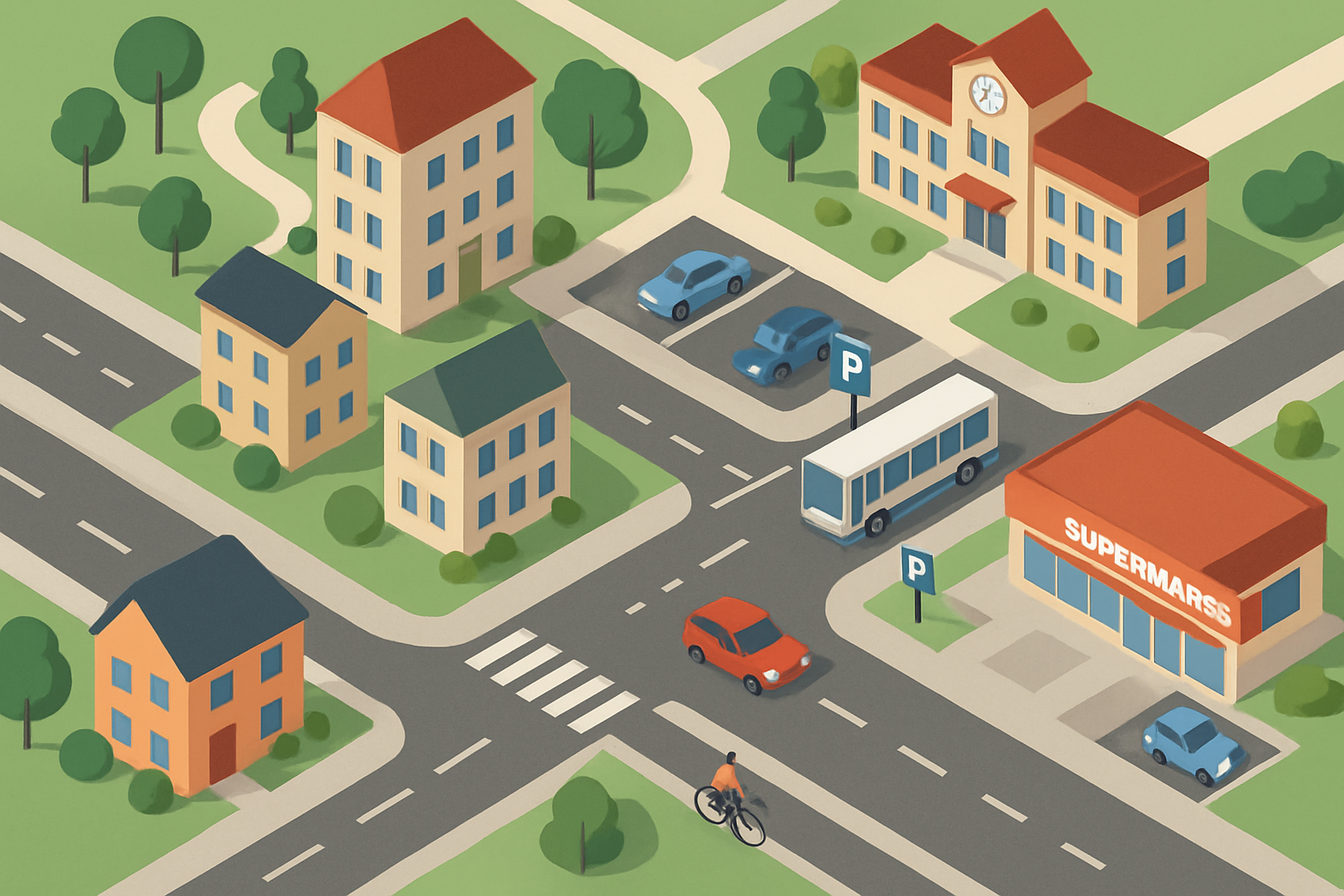
Sandoval-Félix et al. examine a simple question with significant everyday effects: where should a city allocate homes, jobs, and roads to ensure smooth operation? They model Ensenada, Mexico, and introduce a handy idea called “Attractive Land Footprints.” Think of these as spots that are extra tempting for new factories because they’re near workers and big roads, on gentle slopes, and away from homes. These spots don’t stay put—they pop up, move, shrink, or disappear as the city changes. That constant shape-shifting is why planning rules need to keep up.
Here’s the twist: the model finds that more of these “attractive” factory zones fall in places the current rules don’t allow than in places they do. In plain terms, demand for good industrial space exceeds what the plan permits. That mismatch pushes industry to bend rules or sprawl into awkward spots, which you feel as longer commutes, clogged streets, and noisy trucks cutting through neighborhoods. The authors even see a future “attractive” corridor forming along a northeastern road—useful if the road exists and rules adapt, frustrating if not.
Density—how many people live in an area—ends up being a quiet hero. When density is low, the city spreads out, and those attractive spots are quickly consumed by other uses, especially housing. The model shows that at 10–15 people per hectare, as much as 65% of those desirable areas can be urbanized in a single year; at around 35 people per hectare (Ensenada’s current average), that drops to about 14%. Translation: Compact neighborhoods help protect space for jobs, which in turn protects your time and wallet. If density slips lower, industry tends to locate in worse places more often, and residential projects often occupy the very land that would have made commutes shorter and deliveries cheaper.
So what should young residents take from this? First, roads matter: without strong connections, even “perfect” locations won’t work, and good jobs end up farther away. Second, rules matter: if plans ignore how attractive spots really form, the city grows in messy ways you feel daily. Third, your housing choices matter too: choosing, supporting, and voting for denser, well-located neighborhoods helps keep industry near major roads and workers, not next to your bedroom window. In short, smarter density, updated rules, and better road links make everyday life—commuting, deliveries, prices—smoother for everyone. That’s the message behind the model: pay attention to where stuff goes, because it quietly shapes how you live.
Reference:
Sandoval-Félix, J., Castañón-Puga, M., & Gaxiola-Pacheco, C. G. (2021). Analyzing urban public policies of the city of Ensenada in Mexico using an attractive land footprint agent-based model. Sustainability (Switzerland), 13(2), 1–32. https://doi.org/10.3390/su13020714
Privacy Notice & Disclaimer:
This blog provides simplified educational science content, created with the assistance of both humans and AI. It may omit technical details, is provided “as is,” and does not collect personal data beyond basic anonymous analytics. For full details, please see our Privacy Notice and Disclaimer. Read About This Blog & Attribution Note for AI-Generated Content to know more about this blog project.